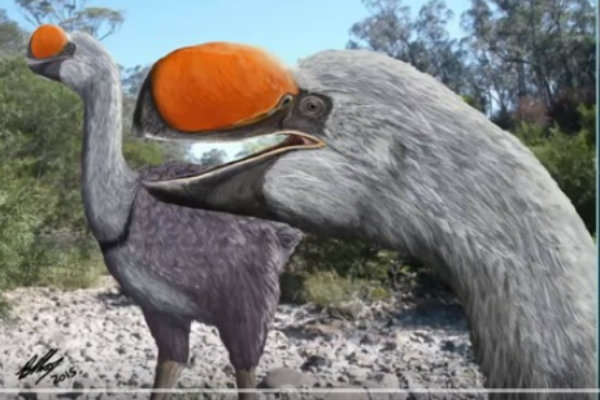Newest addition to Australia's heavyweight prehistoric 'thunderbirds' discovered and named

A new game-changing discovery in the field of paleontology has been made by a team of researchers from Flinders University in South Australia.
Named Dromornis murrayi, the progenetor of the Dromornis thunderbirds also happens to be relatively in the same bloodline as the modern-day duck. The 551-pound feathery heavyweight which is grounded akin to its prehistoric ancestors has a height of 10 feet, according to Physics Org.
Prior to the flightless avian undergoing evolution, its weight was still considered diminutive for the genus Dromornis. However, it changed into infamous 650-kilogram megafauna Dromornis stritoni which was endemic to Australia from 8 million years ago until less than 30,000 years ago.
"It lived in the late Oligocene – early Miocene, and was the first member of the lineage of Dromornis species," says Dr. Trevor Worthy to Physics Org.
"Originally, it was the smallest, at a pretty hefty 250 kg, but by eight million years ago it had evolved into D. stirtoni, which averaged a whopping 450 kg – with some individuals reaching 650 kg – the largest birds the world has known," the paleontologist from Flinders University in South Australia also revealed.
It was also mentioned that these feathery flightless giants adapted to the harsh living environment as far as the Pleistocene period wherein the final member of the so-called thunder birds or mihrungs, the Genyornis newtoni, came out before it also became extinct 50,000 years ago.
These bird heavyweights, according to The Lost World of the Moa: Prehistoric Life of New Zealand, have eight species in the five genera.
At this time after Professor Patricia Vickers Rich named the fifh specie in 1979, the largest of the thunderbirds named after Magnificent Mihirungs co-author, Peter Murray - the Dromornis Murrayi has been named.
According to a published study named Journal of Vertebrate Paleontology, the Australian team intricately reviewed the fossil, interpreting the bones from the skull down to the feet which provided them with an incidental finding that the behemoth had actually lost its wings due to an insignificant formation of wing bones.